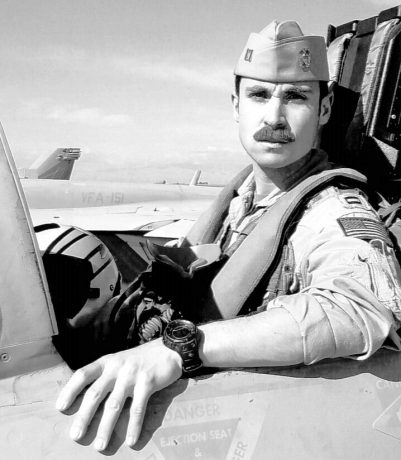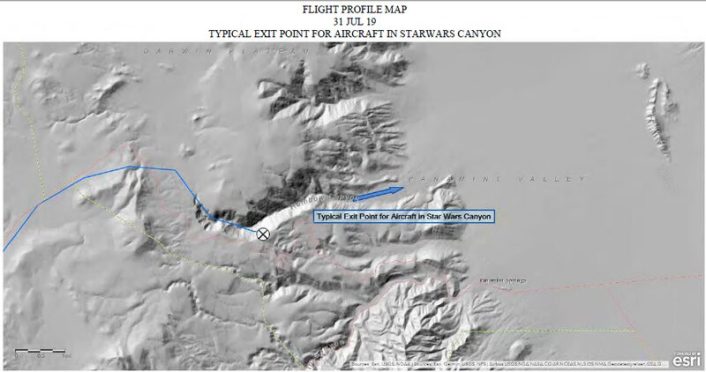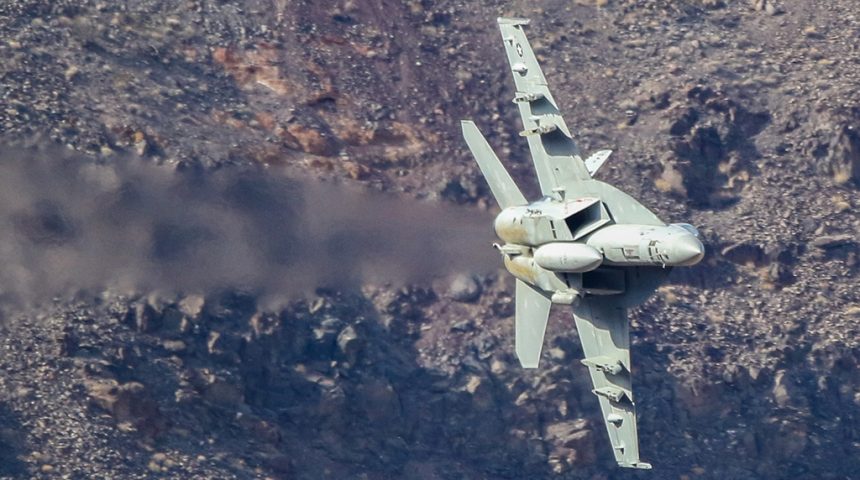Pilot Was “Most Proficient” In Squadron at Low Level Operations Prior to Crash.
“Based on current information, we will never know what actually occurred.” That is one finding in the official U.S. Navy investigation into the tragic July 31, 2019 crash of a U.S. Navy F/A-18E Super Hornet in the Rainbow Canyon low flying training area that killed Lt. Cmdr. Charles Z. Walker.
Writer Geoff Ziezulewicz of the Navy Times was the first to report on the official accident investigation’s findings in his story released this Friday, May 22, 2020.
According to Ziezulewicz’s report on the official accident investigation, Walker, an accomplished pilot with proven experience from Strike Fighter Squadron 151 (VFA-151), the “Vigilantes”, attached to the aircraft carrier USS John C. Stennis (CVN-64), was posthumously promoted to Lt. Cmdr. after the accident from his original rank of Lieutenant held at the time of the accident.
Ziezulewicz went on to write that the July 2019 crash, at approximately 9:50 AM local time in the area known as “Star Wars Canyon”, also injured seven French tourists who were standing on the rim of the canyon at Father Crowley Vista when the F/A-18E crashed.
The popular plane spotting area is located inside Death Valley National Park, Inyo County, California near the California, Nevada border.
The report reads, “The findings of this investigation should be widely shared as an example of the unforgiving nature of naval aviation and the fact that a brief lapse in judgement can produce catastrophic results.”
While the official accident report repeatedly described Lt. Cmdr. Charles Z. Walker’s flying skills as exceptional, and noted his enthusiasm for flying through the low-flying training area, it also went on to reveal that at the time of the crash his F/A-18E was flying, “too fast and too low with respect to the surrounding terrain”.

Ziezulewicz quoted the report as saying, “The flight profile created conditions where the processing time and subsequent reaction time required of the pilot made it difficult for the aircraft to exit the canyon safely.” Ziezulewicz also reported, “The investigator wrote that Walker was not current in low altitude training because he had not flown a minimum of 10 minutes in a low altitude environment in the past 30 days, so he was instructed to keep his jet at least 500 feet above ground level during that day’s training.”
The excerpts from the official crash report as quoted in Ziezulewicz’s story say, “LT Walker was considered to be the most proficient (low altitude training) pilot in the squadron”. Ziezulewicz continued in his story to report, “No evidence emerged that Walker was ‘flat-hatting’ or flying at a low altitude for thrills, according to the report.”
While some of the official accident report and Geoff Ziezulewicz’s reportage of it may seem initially contradictory, a careful interpretation suggests that inherent risk is elevated significantly during high performance flying in low-level training areas proximate to natural obstacles, even for highly proficient pilots. This has always been fact since tactical low-level infiltration flights began, but its reality is seldom underscored in such tragic context.
In the most detailed segment of Ziezulewicz’s report, he quotes the finding as suggesting: “It is possible that LT Walker intended to fly through Star Wars canyon as most aircraft do—through the center of the canyon maneuvering to stay between and below the canyon walls until exiting to the east into the northern portion of the Panamint Valley. LT Walker may have attempted to turn level through the canyon, realized his turn radius would be too great to navigate safely due to his speed and attempted a vertical pull to exit the canyon.” It may have been that during this correction in control inputs to his aircraft that LT Walker traveled far enough across the width of canyon to impact the canyon wall.

The impact with the canyon wall was devastating to LT Walker’s F/A-18E, with photos from the crash site showing no recognizable debris, only a darkly scorched impact mark on the canyon wall.
The seven park tourists from France who were also injured on the ground were observing aircraft flying in the area from Father Crowley Overlook on the south wall of canyon almost directly above where the F/A-18E impacted. They included a male and female ages 57 and 56, and a group of five men and women between 20 and 30 years old. The victims’ names were redacted from the official accident report obtained by Ziezulewicz.
“Upon impact, the French tourists began to run away from the explosion, but were unable to avoid the blast,” the report read. “All were treated for burn injuries of varying degrees.”
An excerpt from the report by the French tourists injured in the crash and translated to English said, “I saw the fire and the debris fly toward us. We were all burned severely. We were very scared, but we are all alive.”
Military flights through Rainbow Canyon were suspended in the wake of the accident pending the completion of the accident investigation. Since the conclusion of the investigation there have been sporadic reports of aircraft flying through Rainbow Canyon at low level, but the frequency of the flights is reportedly greatly reduced compared to the period prior to the July 31, 2019 crash.









